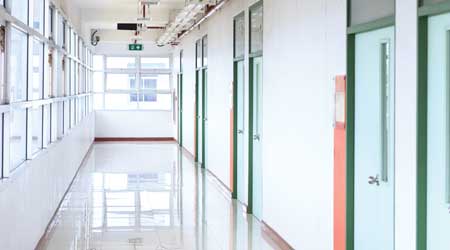Door Hardware: Balancing Security and Life Safety
Facility managers need to be vigilant about both life safety and security, especially in the aftermath of an active shooter event when emotions run high.
The increasing focus on security has prompted multiple new door hardware solutions that can help keep intruders out, while still allowing those who need to exit a facility to do so quickly.
At the same time, facility managers and building owners “need to have a spine,” says John Clancy, principal with Architectural Openings Consultants. That is, they need to remain vigilant about both life safety and security and follow codes. In the aftermath of an active shooter situation, emotions often run high, and some may argue that the need for security should override life safety concerns. Allowing that to happen could backfire in a tragic way.
Facility managers also need to diligently maintain the integrity of their door systems. It can become tempting to accommodate occupants who want to make it easier to enter or exit a facility or room, often without thinking about the potential consequences. For instance, they may prop open fire doors. “That compromises safety,” Frye says.
"At times, security personnel introduce systems they believe will enhance security; however, some also may compromise life safety. An example would be an electro-magnetic locking system that can hold doors in a locked position. They’re often used in retrofits," Frye says.
The problem? These systems can prevent people from leaving. They also may violate building codes. “Magnetic locks are heavily regulated and often misapplied,” Frye says. To minimize the risk of mistakes, facility managers should work with an expert who understands both security and life safety.
Another continual challenge is maintaining airtight openings that comply with NFPA 80, the Standard for Fire Doors and Other Opening Protectives. If the gap becomes too big, it can allow smoke to escape from one area to another, increasing the danger to occupants.
Some facilities use overlapping astragals to close the gaps. However, these may interfere with panic devices, Clancy says. Instead, facility managers and building owners should refer to the recommendations within NFPA 80, and ensure any products are properly installed.
The key with all door and door hardware solutions is maintaining a balance between security and life safety. That means remaining “engaged through lifecycle of building,” Heppes says. Even small changes can inadvertently compromise either security or life safety.
Related Topics:















